Contents


Copyright 2020 by Purdue University. All rights reserved.
Printed in the United States of America.
Cataloging-in-Publication Data is available at the Library of Congress.
Hardback ISBN: 978-1-55753-906-9
ePub ISBN: 978-1-55753-907-6
ePDF ISBN: 978-1-55753-908-3
Cover image: Garden example of archetypal single Elegant Zinnia (Zinnia elegans), with strongly developed central cone of yellow disk flowers and a single outer row of ray petals. Each ray petal has a seed at its base. Compare with Photospread Fig. 17, an illustration of the original Elegant Zinnia described in 1792.

Flower for the Ages
Eric Grissell
Purdue University Press  West Lafayette, Indiana
West Lafayette, Indiana
Contents
For me, zinnias are the drug of choice. Their flowers, coming in every size, shape, and color except blue, are a mainstay of the summer and fall garden, blazing away without a care in the world. After growing all sorts of them for years, I became fascinated by their historyperhaps antihistory is a better wordwhen attempting to discover some sort of truth about their historical development, a history, it turns out, verging on a puzzling mystery at best or a stew of illusive facts peppered with semifiction at worst.
Take, for example, the 1885 novel Marius the Epicurean by Walter Pater, who sets a colorful stage in late second-century Italy. His central character, Marius, visits the Rome flower market and purchases zinias [sic] (like painted flowers, thought Marius) then in blossom, to decorate the folds of their togas.
As we shall eventually discover, when it comes to the history of zinnias, the reverse is true; that is, what are purported as historical facts today are often littered with fiction from the past. As a simple example, treated further in of this book, Johann Gottfried Zinn, for whom the zinnia was named, has often been claimed to have collected zinnia seeds in Mexico and been attacked by bandits while doing so. Such stories, while exciting, are easily verified: Zinn never left Europe and had been dead for a hundred years at the time he was purportedly visiting Mexico. It was just such tantalizing bits of nonsense that enticed me to investigate the history of zinnias, at first simply to satisfy my own curiosity.
For many years I have been a fan of zinnias, but my Maryland garden was not conducive to growing the large well-known flamboyant types common in todays gardens (see Photospread ). Instead, I was drawn to the relatively diminutive, scarcely improved narrow-leaf forms, reaching less than a foot in height with flowers no bigger than a quarter. These sorts happily reseeded on a yearly basis, needing no attention at all except to remove a few seedlings from spots where they were not appreciated. Without help from me, these plants produced hundreds of single flowers in simple colors of white, yellow, or orange. Unlike their more statuesque cousins, however, these mounds of color would grow without constant sunlight in small out-of-the-way places, wherever they decided to sprout.
Of course, I envied my friends who had sun and could grow the larger sorts, but I never felt obligated to tempt fate in that shady garden of mine. Then when I retired from my day job and moved to Arizona, I discovered perpetual sun and little else. In the course of beginning a new garden, I was fortunate to discover two native perennial zinnias as well as an annual one with spiderlike red flowers, all previously unknown to me. Being practical, I grew these three zinnias in my garden, or rather, they grew themselves as naturalized residents.
But then, as do all gardeners, I succumbed to lust. I began seeking out the big onesthe zinnias that fill seed catalogs with glamorous images of color and height and variety of form. In my tottering old age, I turned to the glamorous garden zinnia, given one common name Youth and Old Age, because young buds appear in abundance even as mature flowers retain their colorful composure, declining to pass on for weeks after their own youth. These are the hybrids, which made a round-trip journey first as humble wild forms originating in Mexico and were exported to Spain and then to England, France, Germany, and India, eventually returning to the Americasall the time having been on the move and developing ever more colors and forms than occurred in their wild state. The odd thing about these impressive hybrids, now spread all about the planet, is that relatively little detail is known about them.
To put zinnias somewhat in perspective, there are about two dozen recognized named species, but we are only interested in a few that have become garden standards. All species of the genus Zinnia have a natural center of diversity in Mexico, spreading a bit farther to the north in the western United States and to the south as far as northern and western South America. They naturally originated in these regions of the New World regardless of where they now occur. About half the known zinnia species are hardy perennials appearing as small shrubs in some cases. These forms remain poorly known among gardeners, even keen ones. It is the annual sorts that are generally referred to as garden zinnias and form the subject of this book.
As flowers, annual garden zinnias have been popular since the early 1800s in North America and earlier in Europe, but the historical origin of the flower purports to date back much earlierbut certainly not to Roman times, as Walter Pater suggested in his novelto the time of the Aztecs. According to legend, species of zinnia have been known and grown from the time of the Moctezumas, both father (I) and son (II)that is, from the early 1500s to the present. It is generally assumedpossibly correctlythat ). In the overall world of zinnias, this is the primary species from which our major garden varieties have developed. At present it is not easy to find, if at all, its native form due in part to the escape of cultivated varieties back into the wild as well as a bit of wanton interbreeding.
The earliest known examples of the Elegant Zinnia are termed single-flowered, but this is a misnomer because zinnias are members of the composite or Asteraceae family of plantsimagine a sunflowerthat represents a cluster of hundreds of individual tiny flowers growing upon a single platform called the receptacle. Therefore, and speaking technically, a zinnia or composite is not a flower but instead is a cluster of flowers, as its name suggests. In presenting a single sunflower to a favorite person, for example, it is most correct to exclaim I have brought you a bunch of sunflowers, but this most likely wont catch on.
The small flowers that compose the flower of the Elegant Zinnia and all its relatives represent two basic types: ray flowers and disk flowers. Ray flowers each bear a single colorful petal and often a seed at its base; in single flowers these petals are lined around the rim of the receptacle, producing the sunrays as in a sunflower. Disk flowers have no petals and form the central cone of a zinnia. Whereas ray flowers are either sterile or female, disk flowers are both male and female, frequently appearing yellow or orange due to pollen of the male parts (anther/stamens), giving the center of a single composite flower its additional smidgen of color. The construction of a single-petaled zinnia gives rise to one of its lesser-used names, Mexican Hat. Up to the 1850s all Elegant Zinnias were properly called single-flowered, but suddenly, as if by magic, there appeared double-flowered zinnias from a part of the world then thought of as magic. We will return to this subject in .

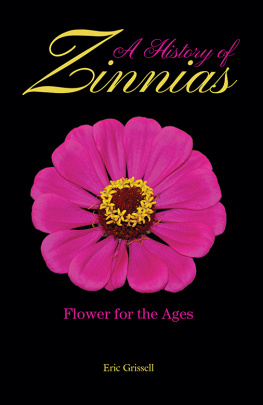



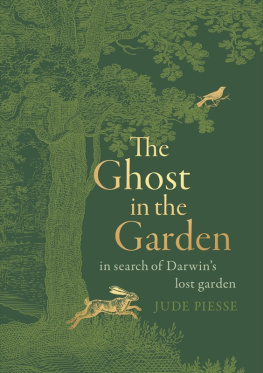
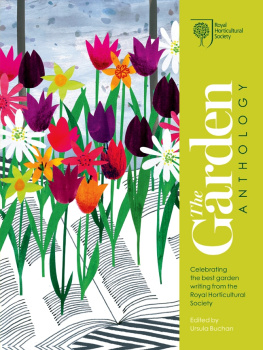
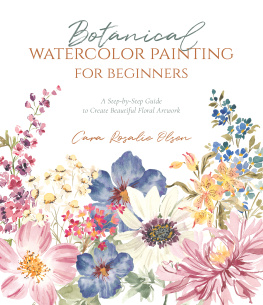
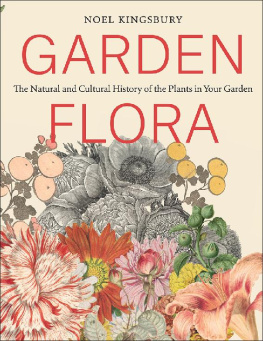
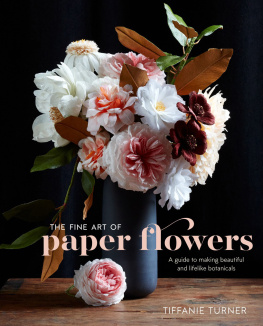
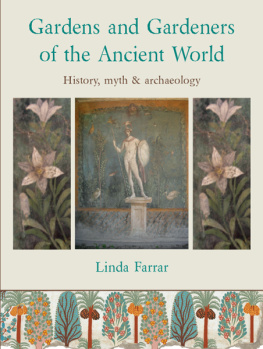



 West Lafayette, Indiana
West Lafayette, Indiana